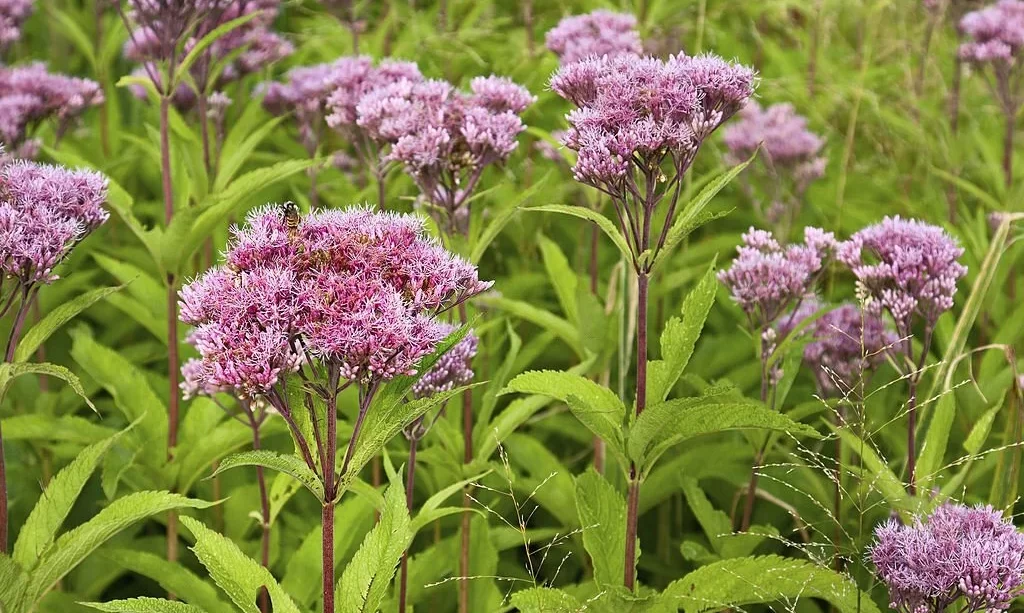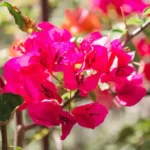Joe Pye weed, with its towering stalks of mauve or pink flowers, has long been a favorite among gardeners and nature enthusiasts. However, as with any plant, questions arise about its behavior and impact on the environment. In this exploration, we delve into the world of Joe Pye weed to understand its nature, growth habits, and whether it exhibits invasive tendencies. By unraveling the mysteries of this captivating plant, we can make informed decisions about its role in our gardens and ecosystems.
Joe Pye Weed Overview
Before delving into the question of invasiveness, let’s begin with a comprehensive overview of Joe Pye weed:
- Botanical Beauty: Joe Pye weed, scientifically known as Eutrochium spp., is a striking native perennial plant renowned for its tall, graceful stature and clusters of delicate, nectar-rich flowers. Its captivating blooms make it a favorite in cottage gardens and natural landscapes alike.
- Ecological Importance: Beyond its aesthetic appeal, Joe Pye weed plays a significant ecological role. It is a valuable source of nectar for pollinators, attracting butterflies, bees, and other beneficial insects. Additionally, its robust growth can provide habitat and cover for wildlife.
- Native Status: Joe Pye weed is native to North America, and various species are found throughout the continent. Its native status is a point of distinction, as native plants typically have evolved to coexist harmoniously with local ecosystems.
Characteristics of Invasive Plants
To assess whether Joe Pye weed is invasive, we must first understand the characteristics that define invasive plants:
- Rapid Growth: Invasive plants often exhibit rapid growth patterns, quickly outcompeting native flora for resources such as sunlight, water, and nutrients.
- Aggressive Spread: They have a tendency to spread aggressively, potentially forming dense colonies that choke out other plant species.
- Ecological Disruption: Invasive plants can disrupt local ecosystems by altering soil composition, affecting water flow, and reducing biodiversity.
- Human Impact: Invasives can also have economic and human health impacts, such as interfering with agriculture or triggering allergies.
Now that we have a solid foundation, we can delve further into Joe Pye weed’s behavior to determine whether it aligns with these invasive characteristics or maintains a more balanced role in our natural environments.
The Behavior of Joe Pye Weed
To better understand Joe Pye weed’s potential invasiveness, we must examine its growth habits and behavior:
- Natural Habitat: In its native habitat, Joe Pye weed thrives in moist to wet areas, including meadows, stream banks, and woodland edges. Here, it plays a valuable role in supporting local pollinators and wildlife.
- Garden Settings: When cultivated in garden settings, Joe Pye weed can be an impressive ornamental plant, attracting pollinators and adding vertical interest to landscapes. Its growth in gardens tends to be more controlled than in the wild.
- Seed Production: Joe Pye weed reproduces primarily through seeds, which are dispersed by the wind. While this can lead to its spread, it doesn’t necessarily translate to invasiveness, as many native plants rely on seed dispersal for propagation.
- Root System: This plant’s root system, while robust, is not typically characterized as invasive or harmful to surrounding vegetation.
Native vs. Non-Native Varieties
It’s essential to differentiate between native Joe Pye weed species and non-native or cultivated varieties:
- Native Species: Native Joe Pye weed species, such as Eutrochium purpureum, have evolved to thrive in their local ecosystems. These natives tend to have a balanced relationship with other plants and wildlife in their natural range.
- Cultivated Varieties: Some cultivated varieties of Joe Pye weed may exhibit different growth habits. These cultivated forms are selected for specific traits, such as flower color or height, and may not always align with the behavior of their native counterparts.
Is Joe Pye Weed Invasive?
Now, let’s address the central question: Is Joe Pye weed invasive?
- Regional Variations: Whether Joe Pye weed is considered invasive can vary by region. In some areas, it may exhibit more aggressive growth than in others, depending on local environmental conditions and competition with other species.
- Responsible Cultivation: Responsible cultivation practices can help manage the potential for invasiveness. Gardeners can choose native Joe Pye weed species and provide appropriate growing conditions to support their local ecosystems.
- Ecological Benefits: It’s important to recognize that Joe Pye weed, when grown responsibly, can provide valuable ecological benefits, such as supporting pollinators and offering habitat for wildlife.
In conclusion, the classification of Joe Pye weed as invasive is not straightforward and can vary by region and species. Responsible gardening practices, including the selection of native varieties and proper plant care, can help mitigate any potential invasiveness while allowing us to enjoy the beauty and ecological contributions of this captivating plant.
Controlling Joe Pye Weed
While Joe Pye weed can be a beneficial and attractive addition to gardens and natural areas, there may be situations where you need to control its growth:
- Pruning: Regular pruning can help manage the height and spread of Joe Pye weed in your garden. Cutting it back before it goes to seed can prevent excessive self-seeding.
- Dividing: If your Joe Pye weed becomes too large or dense, consider dividing it in the spring to reduce its size and rejuvenate the plant.
- Mulching: Applying mulch around the base of Joe Pye weed can help suppress weed growth and maintain a more controlled garden appearance.
- Chemical Control: As a last resort, chemical herbicides can be used to manage Joe Pye weed, but this should be done with caution and following all safety guidelines.
- 【Make Pruning Work Easier】Rust-resistant stainless steel blade are sharp and Long-Lasting for easy and smooth cut.Anti-slip and ergonomic handle make the gardener clippers more comfortable in your hand.Easy-open spring action reduces hand fatigue while cutting. you can easily to cut without damaging the vital stems and branches of your plants.
- 【User-friendly Safety Lock】These garden shears have locking mechanisms to keep the sharp blades securely closed when not in use.It is easy to maneuver and can effectively reduce accidental injuries. And the closing mechanism is firmly enough, you don’t need to worry the plant pruning shears will get locked accidentally during use.
- 【Garden Gloves for Hand Protection】One size fits most. This Gardening gloves,made of soft & comfortable cotton fabric,can protect yourself from dirt, skin wounds and nasty splinters when doing yard chores. The grip latex coating provides anti-slip or sure control when grabbing garden & yard tools.
- 【Widely used】This gardening shears set comes with 3 different blades for a variety of general pruning tasks.It is ideal for harvesting or trimming herbs,flowers,house plants, hydroponics,bonsai,cutting stems or light branches,or other cutting needs in the garden. It would also be a perfect gift for a gardening friend.
- 【After Sales Service】 Reliable Customer Support. Please feel free to tell us if you have any questions about our garden shears pruning. Note:Keeping your pruner shears cleaned and well-oiled can extend their lifespan.Please dry and clean it after use.✅Note: The colors of the garden pruners and gloves will be shipped at random.✅
Benefits of Joe Pye Weed
While we’ve discussed Joe Pye weed’s potential for invasiveness, it’s crucial to recognize the many benefits this plant offers:
- Pollinator Magnet: Joe Pye weed’s nectar-rich flowers attract a wide variety of pollinators, including butterflies, bees, and hummingbirds, making it a valuable addition to pollinator gardens.
- Wildlife Habitat: The tall stems of Joe Pye weed can provide shelter and habitat for beneficial insects, spiders, and even small birds.
- Soil Stabilization: In riparian areas and wetlands, Joe Pye weed’s deep roots help stabilize soil, prevent erosion, and improve water quality.
- Aesthetic Beauty: With its impressive height and attractive flowers, Joe Pye weed adds a touch of wild beauty to gardens and natural landscapes.
Conclusion: Balancing Beauty and Responsibility
In conclusion, Joe Pye weed is a fascinating and multifaceted plant that offers both aesthetic allure and ecological benefits. Whether it’s considered invasive or not can vary by region and species, but responsible cultivation practices can help strike a balance between enjoying its beauty and managing its growth.
By choosing native species, practicing prudent garden maintenance, and understanding the specific needs of Joe Pye weed in your area, you can harness its positive attributes while minimizing any potential negative impacts. Ultimately, it’s about cultivating a harmonious relationship between this charismatic plant and the ecosystems it inhabits, ensuring that Joe Pye weed can continue to enchant us while supporting local biodiversity.





